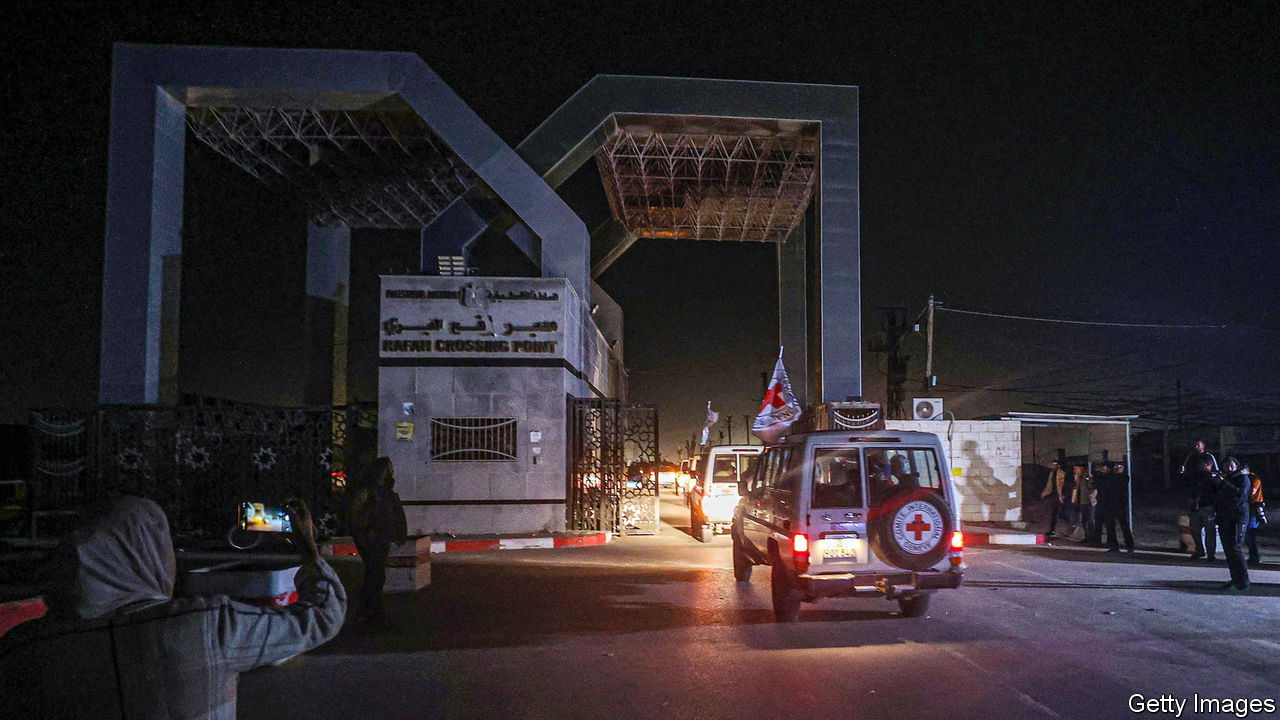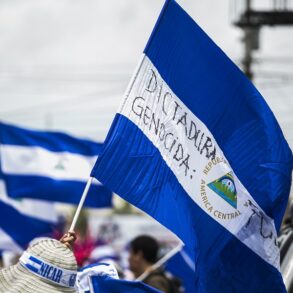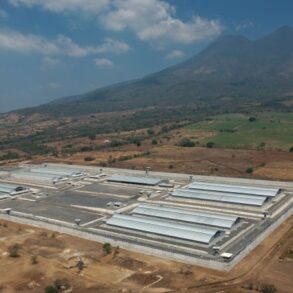
WHEN HAMAS murdered and kidnapped 1,400 people on October 7th it triggered the biggest Middle East crisis in a decade and a brutal war in Gaza. On November 24th a small number of the roughly 240 captives tasted freedom again amid a four-day truce in the fighting. Israeli officials confirmed that 13 Israeli hostages had been handed over to the Red Cross; the authorities in Qatar said another 11 captives, ten holding Thai passports and one from the Philippines, were being released. At the Hatzerim air base in southern Israel, helicopters were standing by to whisk the released Israeli victims, all women or children, to hospitals. Their horrific ordeal may be over but at least 200 other captives remain in Gaza and Israel’s war against Hamas is likely to go on.
The deal—for Hamas to free 50 Israeli hostages in exchange for the four-day truce and the release of 150 Palestinians in Israeli prisons—was struck after weeks of negotiations through Qatari, Egyptian and American mediation. It came amid mounting domestic pressure in Israel to bring the hostages home and growing international outrage over the destruction that Israel has wrought on Gaza. The accounts of the released hostages of the atrocities on October 7th, their abduction and their treatment are likely to dominate life in Israel in the coming days. They will also deepen the debate about whether Israel should prioritise saving further hostages, or put more weight on destroying Hamas’s capacity to terrorise Israelis, and in the process destroying more of Gaza.
The truce between Israel and Hamas came into play at 7am, just as the sun began to rise in Gaza. An alien silence—free of airstrikes and the buzz of drones—descended across the strip’s south. Palestinians, many of whom had fled Israel’s advances, emerged in their thousands from crammed tents and houses in Gaza’s southern cities. Israel had asked those in the south not to return to the north over which it now has effective control, but the unbearable conditions and a desperate search for the missing saw huge crowds march northward regardless. At least 11 Palestinians were wounded and two killed by Israeli forces as they attempted to reach their homes in northern Gaza.
One of those heading north was Sobhia Al-Najar, who had found shelter in Al-Nasser hospital in the southern city of Khan Younis. She took advantage of the pause to go to her house, only to learn it had been destroyed. “All I found was stones and sand,” she said, bursting into tears. “Now I have no home, and no hope for anything.” Abu Mohammed returned to search for missing relatives. “They made a ceasefire as if we would return to our old lives,” he said. “But our lives have lost all meaning, so their ceasefire is useless.”
Several Palestinian ambulances at last made it to the coastal highway near Zahra to collect the bodies of nine Palestinians killed by Israeli naval fire. The Hamas-controlled authorities in Gaza say that some 7,000 Palestinians—4,700 of them women and children—are missing in the enclave. Many of them are thought to be dead and buried beneath the rubble. That is in addition to the more than 14,000 people killed since October 7th, according to the same authorities. One Palestinian official says that now the fighting has stopped, the official death toll will increase sharply.
The truce provides an opportunity to get aid into Gaza. Martin Griffiths, the UN’s humanitarian chief has described the humanitarian situation as “the worst ever”. Two hundred lorries packed with food, medicine and other aid have been allowed through the Rafah crossing. Some were carrying essential fuel, though humanitarian agencies said that amount was “utterly insuficient”.
For the first 39 of the 150 Palestinian women and children to be released from Israeli prisons as part of the deal, there were muted welcoming receptions in the West Bank. Local officials decorated the family home of Rawan Abu Ziadeh with Palestinian flags and banners of the ruling Fatah party. Yet her family, who had been informed she may be among those freed after serving nine years for the attempted stabbing of a soldier, were more subdued. “We are not in the mood for celebrating. The Palestinian people in Gaza have paid a huge price for this. They are the ones we should be thanking,” said her father, Nafes Abu Ziadeh.
If the truce holds more hostages will be released in the coming days. Hamas will hope the deal will amplify calls in Israel for the government of Binyamin Netanyahu to prioritise saving more hostages over prosecuting the war; and draw global attention to the plight of ordinary people in Gaza, in turn putting even more international pressure on Israel to adopt a longer ceasefire. Yet Israel shows little sign of having changed its military objectives and America shows no sign of pulling the plug on its ally. Yoav Gallant, Israel’s defence minister, has said fighting will continue “with intensity” for at least two more months after the truce. Under the deal Hamas may gain an extra day of truce for every ten additional hostages it releases.
Yet several uncertainties remain. One is whether, as the scale of death and destruction becomes more apparent, Gazans will direct their rage towards Hamas and its nihilistic credo, as well as towards Israel. Another is whether and how Israel will modify its tactics to reduce the number of civilians it is killing in Gaza, both to assuage global opinion and to adapt to fighting in the south, from where non-combatants have no realistic possibility of evacuation. Just before the ceasefire came into effect the Israel Defence Forces launched intense strikes on targets in Gaza, including the south. The next phase of the fighting could involve lower-intensity raids in the south in an attempt to kill or capture Hamas’s leaders and fighters.
The last uncertainty is whether a resumption of fighting triggers another round of escalation by Hizbullah and other Iran-backed militias across the region. By November 28th the ceasefire could be over and the Middle East’s nightmare in full swing again. ■
This post was originally published on this site be sure to check out more of their content.







